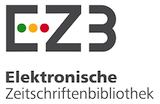USE OF DIFFERENT SODIUM SOURCES ON BROILER PERFORMANCE AND LITTER HUMIDITY
DOI:
https://doi.org/10.5216/cab.v10i4.2680Keywords:
Poultry productionAbstract
A total of 552 female Ross broiler chicks were fed diets containing 3 different sodium sources (sodium chloride, sodium bicarbonate and sodium formiate, with or without addition of ammonium chloride) from 22 to 42 days of age. Performance and litter moisture content were evaluated. Feed and water were supplied ad libitum. A complete experimental block design was used. Birds were distributed into 4 treatments with 6 replicates each. Each one of the replicates contained 23 birds. Each body weight, weight gain, feed intake, feed conversion, the european effciency factor and litter moisture content were examined. Experimental data was analyzed using ANOVA. When a significant F test was obtained, means were separated using Tukey test. A probability of 0.05 was required for statements of significance. Results indicated that sodium bicarbonate and sodium formiate did not influence broiler growth performance, however a hight litter moisture content was observed in birds fed diets containing sodium bicarbonate. Furthermore, the addition of amonium chloride to the diet containing sodium formiate did not influence broiler growth performance and litter moisture.Key words: Electrolyte balance, excreta, sodium bicarbonate, sodium formiate.
Downloads
Download data is not yet available.
Published
2009-12-17
How to Cite
GONÇALVES DA SILVA, R. A.; MAIER, J. C.; ANCIUTI, M. A.; GENTILINI, F. P.; NICHELLE LOPES, D. C.; KRABBE, Éverton L. USE OF DIFFERENT SODIUM SOURCES ON BROILER PERFORMANCE AND LITTER HUMIDITY. Brazilian Animal Science/ Ciência Animal Brasileira, Goiânia, v. 10, n. 4, p. 1029–1036, 2009. DOI: 10.5216/cab.v10i4.2680. Disponível em: https://revistas.ufg.br/vet/article/view/2680. Acesso em: 2 jan. 2025.
Issue
Section
Animal Production
License
Authors who publish with this journal agree to the following terms:
- Authors retain copyright and grant the journal right of first publication with the work simultaneously licensed under a Creative Commons Attribution License that allows others to share the work with an acknowledgement of the work's authorship and initial publication in this journal.
- Authors are able to enter into separate, additional contractual arrangements for the non-exclusive distribution of the journal's published version of the work (e.g., post it to an institutional repository or publish it in a book), with an acknowledgement of its initial publication in this journal.
- Authors are permitted and encouraged to post their work online (e.g. in institutional repositories or on their website) prior to and during the submission process, as it can lead to productive exchanges, as well as earlier and greater citation of published work (See The Effect of Open Access).





























